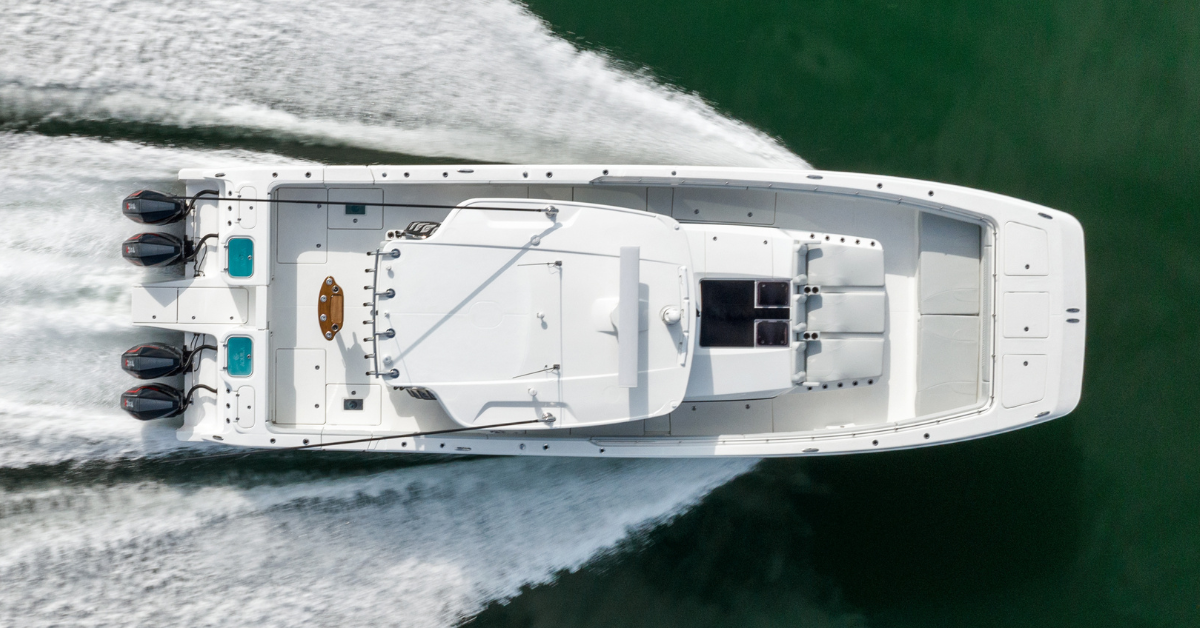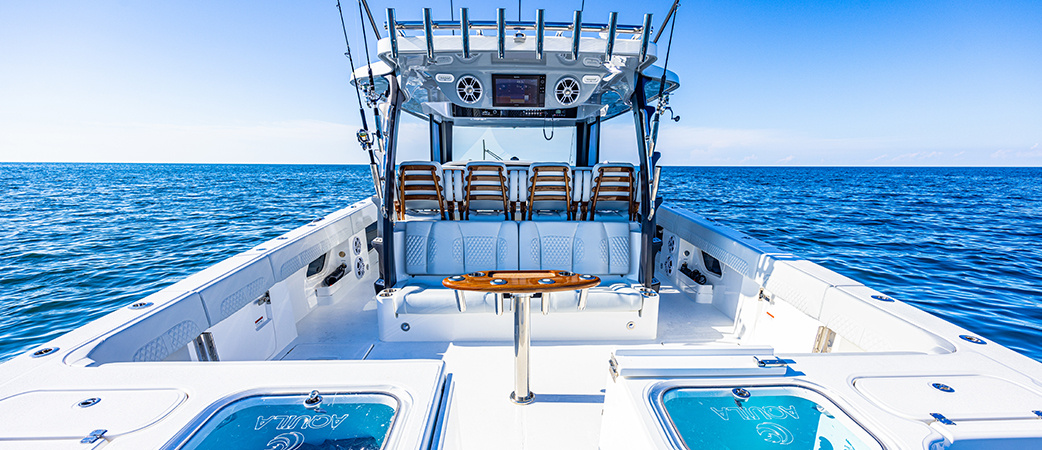47 Molokai Dominates Two Top 10 Lists
Aquila 47 Molokai Dominates Two Top 10 Lists The Aquila 47 Molokai Power Catamaran has secured its place as one of the most impressive boats on the...

Since the debut of the Aquila 28 Molokai and Aquila 28 Molokai Cuddy, which marked the inception of the Offshore line, these exceptional vessels have become popular choices among avid anglers. However, the fascinating story behind their creation remains largely untold. Read on to delve into the enthralling history of these pioneering models as we reveal intriguing facts that shed light on their remarkable journey.

In the early 1960s, Kirk Clarke (as shown on the left), a proven multihull designer and waterman from the island of Molokai in Hawaii, started experimenting with different materials such as resin and fiberglass to use within his designs. This iconic Hawaiian island designer created a boat that rides, runs, and rests in all sea conditions. Around the same time, Lex Raas was exposed to the catamaran building traditions of his home in South Africa. Although halfway across the globe, both Hawaiian and South African boat builders deal with the same challenge, coping with some of the most difficult seas in the world.

Fast-forward to a more recent Maui to Molokai (M2M) downwind outrigger canoe race held annually. Lex, now the president of Aquila Power Catamarans, entered and returned to Maui on a power catamaran designed and built by Kirk. The surprisingly smooth ride through a tough seaway spurred Lex to meet the fabled designer, which led to the the two self-accomplished catamaran authorities concluding that offshore fishing enthusiasts could benefit from their combined knowledge and expertise. An incredible new design began to take form with a shape and a stance that offers peerless performance and efficiencies infused with a blue-water spirit all its own.

After strategic planning combined with two brilliant minds, the Aquila 28 Molokai and 28 Molokai Cuddy Power Catamarans were born. These blue-water gems have massive weight-carrying abilities and offer a dry ride in steep chop. They are extremely efficient during an extended range, have reduced horsepower requirements, and lower operating costs—which have become foundational aspects of the new designs. Additionally, since the boats have such a strong Hawaiian heritage in their DNA, the name “Molokai” was a given, and a rendering of the island's outline is on the dash.

On the subject of Molokai, the island itself has a rich and somewhat unsettling history. Upon seeing the island’s lush green mountains, waterfalls, and enormous cliffs, not many would believe this beautiful island was designated a leprosy colony by King Kamehameha V in 1886. This location was home to 8,000 exiled lepers until 1969. On a much lighter note, Molokai is also the birthplace of the hula dance and is celebrated annually in May during the Ka Hula Piko Festival. In addition, below are some other fun facts about the island:
Learn more about the Aquila Offshore line.

Aquila 47 Molokai Dominates Two Top 10 Lists The Aquila 47 Molokai Power Catamaran has secured its place as one of the most impressive boats on the...

The Ultimate Fishing Machine: Test the Aquila 47 Molokai at Miami International Boat Show For serious offshore anglers, the Aquila 47 Molokai Power...

The Aquila 47 Molokai Worldwide Debut at the Fort Lauderdale International Boat Show Aquila Power Catamarans, a leading name in the world of luxury...